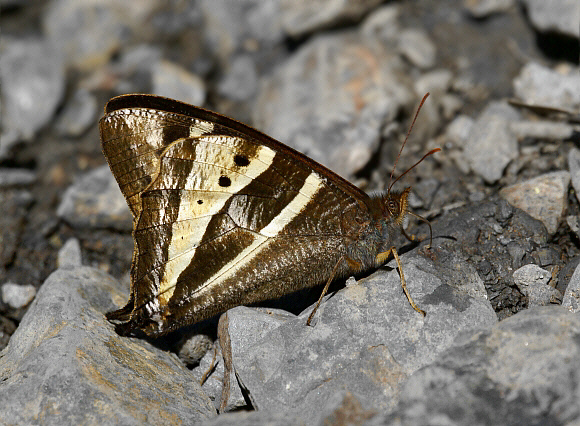
Introduction
There are 1100 known species of Satyrinae in the neotropical region. About 570 of these are placed in the subtribe Pronophilina – a diverse group of high altitude cloudforest butterflies, all of which are confined to the neotropical region. The vast majority are found only in the Andes, but 4 species are known from the Atlantic cloudforests of Brazil, and there are a further 6 species that are endemic to Guatemala, Costa Rica or Mexico. More oddly there is one genus Calisto that is found exclusively on the Caribbean islands of Cuba and Hispaniola.
The genus Corades comprises of 23 known species, but it is likely that more will be discovered as remote cloudforest regions become more fully explored. The butterflies are instantly recognisable by their large size and distinctively shaped hindwings. The pattern on the underside varies according to species. Many such as iduna, cybele and medeba are a unicolorous brown, peppered and striated with grey and black, while others including ulema, cystene and chirone are beautifully marbled or banded with cream. The uppersides of Corades species are dark brown, and in most species the forewings are marked with splashes of orange or deep red. The upperside hindwings of several species including chelonis, enyo and pax are almost wholly reddish-orange. The upperside of ulema is a dingy earthy brown, heavily peppered on the forewings with ochreous.
Corades ulema occurs in Ecuador, Peru and Bolivia.
Habitats
This species breeds in the forested calderas of extinct volcanoes such as Pululuhua Crater in Ecuador, and in cloudforests at altitudes of 2000-2800m in Peru and Bolivia.
Lifecycle
The lifecycle appears to be unrecorded. The following generalisations are applicable to the subtribe Pronophilina and are probably applicable to Corades: The eggs are round, white or pale greenish white, and laid singly on the foodplants or on surrounding vegetation. The larvae are typically pale brown, marked along the back and sides with narrow dark stripes, and tapering towards each end. The head is large in proportion to the body and has two short forward-pointing horns. The tip of the abdomen is equipped with a pair of caudal prongs which are used to flick the frass away from the feeding area. The larvae of all known Pronophilina feed on Chusquea – a genus of bamboo which grows in thickets, mainly along the courses of streams.
Adult behaviour
The butterflies are encountered singly and infrequently, and perch on foliage at heights of about 3 or 4 metres above the ground. In mid-late afternoon the males will sometimes descend to imbibe moisture at the edge of shallow streams, particularly where they ford unsurfaced roads in well forested areas.
